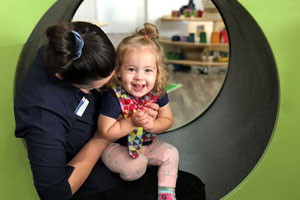 Finding the balance between strong supervision and providing a fun, flexible and welcoming learning environment requires proactive planning.
Finding the balance between strong supervision and providing a fun, flexible and welcoming learning environment requires proactive planning.
Quality supervision involves more than just complying with educator-child ratios—it requires educators to engage with children while monitoring and observing their actions at all times.
It requires vigilance, good service design, appropriate rostering decisions and a high level of cooperation and communication between staff.
North Queensland’s Condon Kids Early Learning Centre (ELC) holds an Exceeding rating under the
National Quality Framework with innovations in supervision a particular standout.
Condon Kids ELC nominated supervisor Arielle Russoniello shared some of her tips on providing strong supervision in a flexible learning environment.
'Our focus on supervision helps families feel confident in their child’s safety,' Arielle said.
'Our number one priority is to ensure there are always enough educators to support, see and guide play, and make sure everyone is safe at all times.
Each day, a staff member is assigned the job of monitoring ratios of children and assigning staff to areas within the service.
This staff member does not supervise children so they are not counted in the ratio.
This ensures they can accurately complete this task and make sure everyone is where they have been designated at all times.'
Arielle said the design of the facilities at Condon Kids ELC allowed free-flow play and free-flow meal times for children, so the organisation of educators needed to support a flexible layout of learning.
'A number of educators are allocated to each room, however, there are additional educators who have the sole job of supporting children transition freely between spaces,' she said.
'For example, a child transitioning to the dining room for morning tea or lunch would be supported by an educator.'
The service also conducts regular critical reflection of the quality areas at monthly team forums to identify areas for improvement and modify practice accordingly.
'Recently, educators identified there was a blind spot in the outdoor environment which was restricting their ability to provide supervision in that area,' Arielle said.
'Supervision mirrors were installed to increase visibility in the area and this has improved our supervision practices.'
When to increase educator-to-child ratios
There are times you will need to increase your educator-to-child ratios, including during:
- water play
- high-risk physical activities (such as climbing on monkey bars)
- transitions (including transitioning children between a school and the service or between outdoor areas for outside school hours care services)
- excursions
- bush kindy
- transportation to and from the service.
More information
Read the applicable legislative requirements for supervision:
Read or watch more about the importance of supervision, including best practice and cautionary examples: